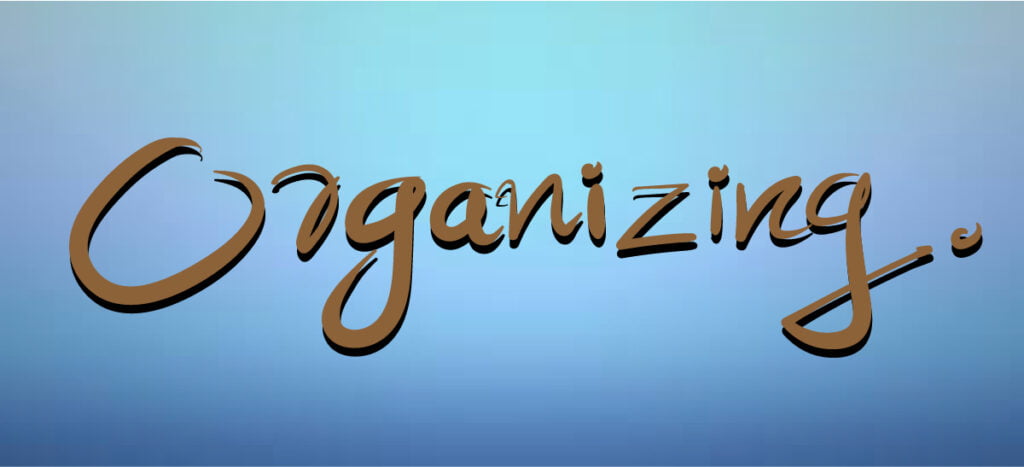Ever wondered why some companies thrive despite economic downturns while others crumble at the slightest market shift? The secret often lies in strategic risk management—a powerful approach that helps businesses navigate uncertainty and stay ahead of the curve.
But what exactly is it, and how does it work? Buckle up, because we’re about to break it down in a way that’s easy to grasp—even if you’re just starting out!
Understanding Strategic Risk Management
Strategic risk management (SRM) is the process of identifying, assessing, and mitigating risks that could derail a company’s long-term goals. Unlike operational risks (like a machine breaking down), strategic risks affect the big-picture decisions—think market shifts, new competitors, or sudden regulatory changes.
Key elements include:
- Proactive planning (not just reacting to crises)
- Aligning risks with business objectives
- Balancing risk and reward
Why Is It Important?
Imagine driving blindfolded—sounds risky, right? Businesses that ignore strategic risks are essentially doing the same. Effective SRM helps:
✔ Avoid costly surprises
✔ Seize new opportunities safely
✔ Build investor and customer trust
Without it? Even industry giants can fall—just look at Blockbuster vs. Netflix!
Types of Strategic Risks
Not all risks are created equal. Here are the big ones to watch out for:
Competitive Risks
New competitors, price wars, or losing market share—these can shake even the strongest businesses. Example? When Apple launched the iPhone, Nokia didn’t adapt fast enough.
Economic Risks
Recessions, inflation, or currency fluctuations can turn profits into losses overnight.
Regulatory Risks
Laws change—sometimes overnight. Companies like Uber and Airbnb constantly face legal battles in new markets.
Technological Risks
Miss the latest tech trend? You could be left behind (hello, Kodak vs. digital cameras!).
Reputational Risks
A single scandal (like data breaches or unethical practices) can destroy years of trust.
The Strategic Risk Management Process
Effective strategic risk management requires a structured, repeatable process that integrates with organizational planning and decision-making. This process doesn’t happen once and then get forgotten; rather, it represents an ongoing cycle of activities that evolves with changing circumstances.
Risk Identification
The risk identification phase involves systematically scanning both internal and external environments to uncover potential threats to strategic objectives. This process requires looking beyond obvious risks to identify emerging threats that may not yet be on competitors’ radars. Environmental scanning techniques help organizations monitor technological developments, regulatory changes, social trends, and competitive dynamics that could impact their strategies.
Scenario planning represents a powerful tool for strategic risk identification. By constructing multiple plausible future scenarios, organizations can identify risks that might not be apparent under current conditions. Shell Oil’s famous scenario planning exercises helped them navigate oil crises more effectively than competitors who hadn’t considered such extreme possibilities.
Risk Analysis and Evaluation
Once identified, risks must be analyzed to understand their potential impacts and likelihood. This analysis phase separates truly strategic risks from less significant threats that can be managed through normal operational processes. Qualitative assessment methods help organizations understand the nature and potential consequences of risks, while quantitative approaches attempt to measure probability and impact more precisely.
The challenge lies in evaluating risks that may be unprecedented or difficult to quantify. How do you assess the probability of a “black swan” event—something that’s never happened before but could have catastrophic consequences? Advanced organizations combine multiple assessment methods, incorporate expert judgment, and acknowledge uncertainty rather than pretending precision where none exists.
Risk Response Strategies
Strategic risk management offers several response options, each appropriate for different risk types and organizational contexts. Risk avoidance involves eliminating exposure to certain risks by changing strategic direction or avoiding particular activities. While sometimes necessary, avoidance can also mean missing valuable opportunities.
Risk mitigation focuses on reducing either the likelihood or impact of risks through preventive measures or contingency planning. Technology companies often mitigate platform risks by developing products compatible with multiple operating systems, reducing dependence on any single technology provider.
Risk transfer mechanisms, including insurance and contractual arrangements, can shift risk exposure to parties better equipped to manage particular threats. However, strategic risks often prove difficult to transfer because they’re unique to specific organizations or industries.
Risk acceptance represents a conscious decision to proceed despite identified risks, typically when the potential rewards justify the exposure or when other response options aren’t practical or cost-effective.
Building a Strategic Risk Management Framework
Creating an effective strategic risk management capability requires more than just implementing processes and procedures. It demands fundamental changes in how organizations think about uncertainty and make decisions. The framework must integrate with existing governance structures while creating new capabilities for risk sensing and response.
Governance and Accountability Structures
Effective strategic risk management begins with clear governance structures that define roles, responsibilities, and accountability for risk management activities. The board of directors typically maintains ultimate oversight responsibility, ensuring that management adequately identifies and addresses strategic risks. However, the board’s role isn’t to manage risks directly but rather to establish risk appetite, monitor management’s risk management activities, and intervene when necessary.
Risk committees, whether at the board or management level, provide focused attention to risk management issues. These committees must possess sufficient expertise to understand complex risk interactions and adequate authority to drive necessary changes. The composition of risk committees matters significantly—diverse perspectives and relevant experience enhance their effectiveness.
The three lines of defense model provides a useful framework for organizing risk management responsibilities. The first line consists of operational management who own and manage risks daily. The second line includes risk management functions that provide oversight, guidance, and support. The third line encompasses internal audit functions that provide independent assurance regarding risk management effectiveness.
Creating a Risk-Aware Culture
Technical frameworks and processes, while necessary, aren’t sufficient for effective strategic risk management. Organizations must cultivate cultures that encourage risk awareness, open communication about threats, and proactive risk management behaviors. This cultural transformation often proves more challenging than implementing new procedures or technologies.
Risk awareness training helps employees understand their roles in the risk management process and develop skills for identifying and assessing risks within their areas of responsibility. However, training alone doesn’t create lasting cultural change. Organizations must align incentives, celebrate risk management successes, and avoid punishing employees who raise uncomfortable but necessary risk concerns.
Communication strategies play crucial roles in building risk-aware cultures. Regular risk reporting, transparent discussions about risk management decisions, and visible leadership commitment to risk management principles all contribute to cultural transformation. Organizations that successfully integrate risk considerations into strategic planning and performance management processes typically achieve better risk outcom
Strategic risk management examples
Understanding strategic risk management concepts becomes more meaningful when examined through real-world applications. Different industries face unique strategic risk profiles, and examining both successes and failures provides valuable insights for practitioners.
Technology Sector
Technology companies operate in environments characterized by rapid change and intense competition. Strategic risks in this sector often center around technological obsolescence, platform dependencies, and market timing. Apple’s success with the iPhone demonstrates masterful strategic risk management—they recognized the strategic threat posed by smartphones to iPod sales and cannibalized their own product rather than allowing competitors to do so.
Conversely, Yahoo’s strategic missteps illustrate the consequences of poor strategic risk management. Despite early advantages in web services, Yahoo failed to adequately assess risks posed by Google’s search capabilities and Facebook’s social networking platform. Their inability to execute effective responses to these strategic threats ultimately led to their acquisition by Verizon at a fraction of their peak value.
Financial Services
Financial institutions face unique strategic risk challenges due to their role as risk intermediaries and their heavy regulatory oversight. The 2008 financial crisis highlighted how inadequate attention to strategic risks—particularly those arising from new financial instruments and interconnected market relationships—can threaten entire industries.
JPMorgan Chase’s management of the crisis demonstrates effective strategic risk management principles. While not immune to losses, their conservative approach to risk-taking and strong capital position enabled them to acquire distressed competitors and emerge stronger. Their success stemmed from understanding that short-term profits weren’t worth strategic risks that could threaten long-term survival.
Manufacturing
Manufacturing companies increasingly face strategic risks related to supply chain resilience, environmental regulations, and changing consumer preferences. Toyota’s lean manufacturing approach initially provided competitive advantages through efficiency and quality improvements. However, the 2011 Japanese tsunami exposed strategic risks in their just-in-time supply chain model, leading to production disruptions worldwide.
The incident prompted Toyota and other manufacturers to reassess their strategic risk management approaches, balancing efficiency gains against resilience requirements. Many companies now maintain strategic inventory buffers and develop multiple supplier relationships to mitigate supply chain concentration risks.
The Value Proposition of Strategic Risk Management
Organizations invest in strategic risk management because it creates tangible value through multiple channels. While the benefits may not always be immediately visible—particularly when risks don’t materialize—the cumulative impact of effective risk management can be substantial.
Enhanced Decision-Making Capabilities
Strategic risk management improves decision-making by providing structured frameworks for evaluating alternatives under uncertainty. When organizations systematically consider risk implications of strategic choices, they make more informed decisions that account for potential downsides alongside expected benefits. This enhanced decision-making capability becomes particularly valuable during periods of significant change or uncertainty.
Consider Microsoft’s strategic pivot from software licensing to cloud services. This transformation involved enormous strategic risks—cannibalizing existing revenue streams, investing billions in new infrastructure, and competing against established cloud providers. Microsoft’s systematic approach to managing these risks, including gradual migration strategies and hybrid service offerings, enabled successful transformation while minimizing disruption.
Improved Stakeholder Confidence
Investors, customers, employees, and other stakeholders increasingly expect organizations to demonstrate effective risk management capabilities. Rating agencies incorporate risk management assessments into credit evaluations, while institutional investors consider governance and risk management practices when making investment decisions. Strong strategic risk management capabilities can therefore improve access to capital and reduce financing costs.
Furthermore, customers increasingly prefer doing business with organizations that demonstrate stability and reliability. B2B customers, in particular, evaluate suppliers’ strategic risk management capabilities to ensure continuity of critical services. Organizations with strong risk management reputations often command pricing premiums and enjoy stronger customer loyalty.
Competitive Advantage and Innovation
Paradoxically, effective strategic risk management can enhance innovation and competitive positioning. By developing capabilities to assess and manage risks systematically, organizations become more willing to pursue innovative strategies that competitors might avoid. This risk management capability itself becomes a competitive advantage, enabling faster response to opportunities and threats.
Amazon’s expansion into cloud computing services exemplifies this principle. While entering an unfamiliar market involved significant strategic risks, Amazon’s systematic approach to risk assessment and management enabled them to build AWS into a dominant platform that now generates substantial profits and competitive advantages.
Future Trends and Emerging Considerations
Strategic risk management continues evolving as new technologies, changing stakeholder expectations, and global challenges create novel risk categories and management approaches. Understanding these trends helps organizations prepare for future risk management requirements.
Technology-Enabled Risk Management
Artificial intelligence and machine learning technologies are beginning to transform risk identification and assessment capabilities. These technologies can analyze vast amounts of data to identify patterns and correlations that humans might miss, potentially providing early warning signals for emerging strategic risks. However, AI systems also create new categories of strategic risks related to algorithmic bias, data quality, and technological dependencies.
Real-time risk monitoring capabilities enabled by Internet of Things sensors and data analytics platforms allow organizations to track risk indicators continuously rather than relying on periodic assessments. This capability can provide earlier warning of developing problems and enable more timely risk responses.
Stakeholder Capitalism and ESG Considerations
Growing emphasis on stakeholder capitalism and environmental, social, and governance (ESG) factors is creating new categories of strategic risks. Organizations must consider how their activities impact various stakeholder groups and manage risks related to climate change, social inequality, and governance practices. These considerations are becoming material factors in investment decisions and regulatory requirements.
The challenge lies in measuring and managing risks that may have long-term consequences but unclear short-term impacts. Climate-related risks, for example, may not materialize for decades but require immediate strategic responses. Organizations need new frameworks for evaluating and communicating about these long-term strategic risks.
Agile Risk Management Approaches
Traditional annual risk assessments may prove inadequate in rapidly changing environments. Organizations are experimenting with more agile risk management approaches that emphasize continuous monitoring, rapid response capabilities, and iterative improvement. These approaches borrow concepts from agile software development and lean startup methodologies.
Agile risk management requires cultural changes that emphasize learning, experimentation, and rapid adaptation. Organizations must become comfortable with uncertainty and develop capabilities for making decisions with incomplete information. This represents a significant shift from traditional planning approaches that attempt to predict and control future outcomes.
Conclusion
Strategic risk management represents far more than a defensive necessity in today’s complex business environment. Organizations that master these capabilities can transform uncertainty from a source of anxiety into a competitive advantage. They become more agile, make better decisions, and build stronger stakeholder relationships.
The lessons from companies like Kodak remind us that ignoring strategic risks can have catastrophic consequences. Conversely, organizations like Netflix, Apple, and Amazon demonstrate how systematic attention to strategic risks can enable remarkable transformations and sustained success.




